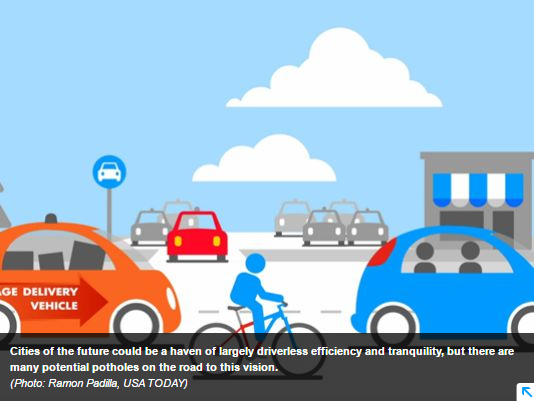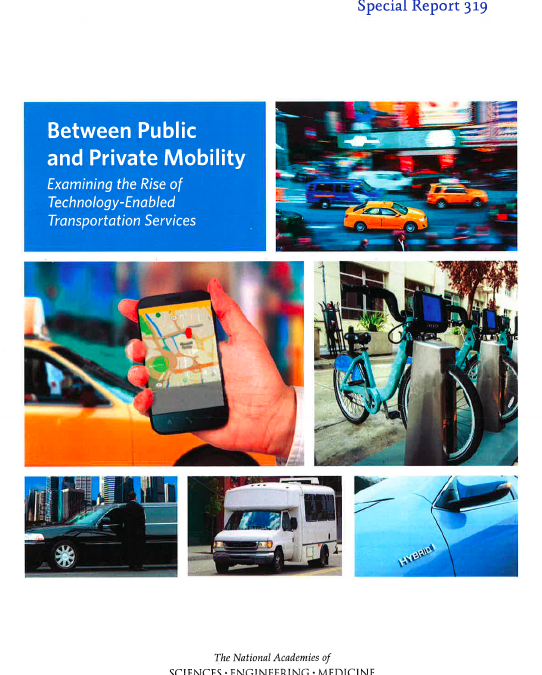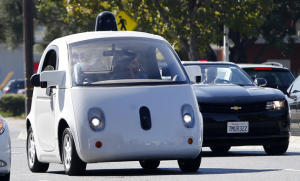
by Innovative Mobility Research | Feb 8, 2016 |
Marco della Cava, 12:28 p.m. EST November 13, 2015 SAN FRANCISCO – The city of the future has had countless fantasy blueprints, from The Jetsons’ pleasant hive of automated efficiency to Blade Runner’s dystopian tangle of urban chaos. But the reality is the city of future is closer than you think, as tech companies and automakers floor the pedal on projects ranging from cars that drive themselves to apps that aggregate transportation options. Conversations with mobility experts here and abroad paint a picture of an urban revolution that is already underway in a patchwork of cities from Seattle to Stockholm. “The main thing with automated and connected tech is to make sure it’s reliable first,” says Chris Hendrickson, director of the Traffic21 Institute at Carnegie Mellon University. “But the opportunities for change are impressive.” To read the rest of the story,...
by Innovative Mobility Research | Jan 11, 2016 |
Authors: Apaar Bansal and Susan Shaheen Date Published: Jan 11, 2016 The Disrupting Mobility Summit was held at the Massachusetts Institute of Technology’s (MIT) campus in Cambridge, between November 11 and 13, 2015. The event was a joint effort of the Transportation Sustainability Research Center (TSRC) University of California (UC), Berkeley; London School of Economics (LSE) Cities of LSE, and MIT’s Media Lab. Held over two days, the conference was comprised of keynote sessions, breakout panels, a hackathon, and a poster session. It gathered experts in the urban mobility space from the private and public sectors, including the Deputy Secretary of Transportation, Victor Mendez. The full synopsis can be found here. Videos of the event can be found...

by Innovative Mobility Research | Dec 16, 2015 |
By Melanie Curry 12/11/2015 In the last few years, technological advances have been changing the transportation system in ways unanticipated and unprecedented. Bike-share and car-share offered alternatives heretofore nonexistent. Then, in swept Uber and Lyft and other “Transportation Network Companies,” or TNCs, and mobile apps that could completely change the ways people move around in their communities. The National Academies of Sciences, Engineering, and Medicine convened a Committee for Review of Innovative Urban Mobility Services to conduct a consensus study on “technology-enabled transportation services,” including car-share, bike-share, TNCs, ride-sharing companies and mobile apps. Its just-released report, “Between Public and Private Mobility: Examining the Rise of Technology-Enabled Transportation Services,” raises open-ended questions about how these new services might affect current and future transportation systems, and what policymakers and planners ought to be thinking about. To read the full article, click...

by Innovative Mobility Research | Nov 5, 2015 |
By Matt O’Brien 10/26/2015 When the Florida Highway Patrol pulled him over this month for driving too fast, Brooks Weisblat didn’t bother telling the officer that his Tesla Model S had been driving itself. “That would have definitely got me a ticket,” said Weisblat, who got a warning notice instead. Florida doesn’t have a driver’s handbook dictating robot rules of the road. No state does, but California could become the global model next year when it publishes first-in-the-world consumer rules for self-driving cars. Those regulations are already a year behind schedule. Among the problems vexing officials with the Department of Motor Vehicles is how to handle not just the machines but their overtrusting owners. To read the full article, click...
by Innovative Mobility Research | Nov 3, 2015 |
Authors: Susan Shaheen, Nelson Chan, Apaar Bansal, Adam Cohen Date Published: November 3rd, 2015 Abstract: Shared mobility – the shared use of a vehicle, bicycle, or other mode – is an innovative transportation strategy that enables users to gain short-term access to transportation modes on an “as-needed” basis. The term shared mobility includes various forms of carsharing, bikesharing, ridesharing (carpooling and vanpooling), and on-demand ride services. It can also include alternative transit services, such as paratransit, shuttles, and private transit services, called microtransit, which can supplement fixed-route bus and rail services. With many new options for mobility emerging, so have the smartphone “apps” that aggregate these options and optimize routes for travelers. In addition to innovative travel modes, new ways of transporting and delivering goods have emerged. These “courier network services” have the potential to change the nature of the package and food delivery industry. Shared mobility has had a transformative impact on many global cities by enhancing transportation accessibility, while simultaneously reducing driving and personal vehicle ownership. A number of environmental, social, and transportation-related benefits have been reported due to the use of various shared mobility modes. Several studies have documented the reduction of vehicle usage, ownership, and vehicle miles or kilometers traveled (VMT/VKT). More research is needed, nevertheless, to further understand impacts on a city and regional level and across the wide range of shared mobility modes. Shared mobility could also extend the catchment area of public transit, potentially playing a pivotal role in bridging gaps in existing transportation networks and encouraging multi-modality by addressing the first-and-last mile issue related to public transit access. Furthermore, shared mobility...




